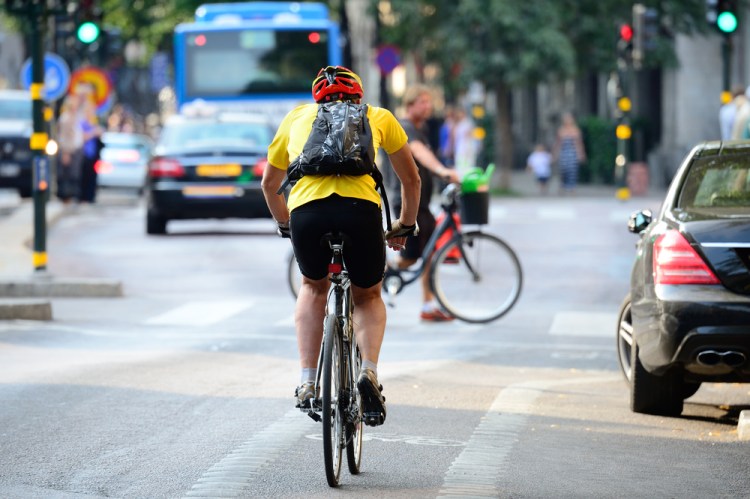If you are going to be killed by a car while riding a bicycle, there’s a good chance you are male, older than 20 and living in California or Florida.
That’s the finding of a report issued Monday by the Governors Highway Safety Association that also noted that between 2010 and 2012, U.S. bicyclist deaths increased by 16 percent.
California, with 338 cyclists killed in collisions with motor vehicles, and Florida, with 329, had the highest totals during that period, the report said.
They also had the largest increases in annual cyclist traffic fatalities from 2010 to 2012. Florida’s deaths rose by 37 to 120 in 2012 while cyclist traffic fatalities in California rose by 23 to 123. California had the most bicyclists killed of any state in 2012. But Florida has a higher rate of per capita deaths because it has a smaller population and nearly the same number of fatalities.
Nationally, cyclist traffic deaths jumped from 621 in 2010 to 680 in 2011 and 722 in 2012. The 16 percent increase was far greater than other motor vehicle fatalities, which rose by just 1 percent during this same time period.
Bicyclist deaths account for about 2 percent of deaths involving motor vehicles nationwide. But they account for about 5 percent in Florida and a little more than 4 percent in California.
Just six states, California, Florida, Illinois, New York, Michigan and Texas, accounted for 54 percent of all cycling traffic fatalities from 2010 through 2012.
Allan Williams, formerly the top scientist at the Insurance Institute for Highway Safety, analyzed fatality data to uncover bicyclist crash patterns and compile the report.
He noted there have been “remarkable changes” in who is dying in crashes involving bicycles and cars. For example, adults 20 and older represented 84 percent of bicyclist fatalities in 2012, compared with just 21 percent in 1975. Adult males made up 74 percent of the total number of bicyclists killed in 2012.
The lack of helmet use and alcohol impairment continue to contribute to bicyclist deaths, Williams said.
In 2012, two-thirds or more of fatally injured bicyclists were not wearing helmets, and 28 percent of riders 16 and older had blood alcohol concentrations of .08 percent or higher, the level at which someone is considered impaired, according to the report.
“What’s notable here,” Williams said, “is that the percentage of fatally injured bicyclists with high BACs has remained relatively constant since the early 1980s and did not mirror the sharp drop in alcohol-impaired driving that occurred among passenger-vehicle drivers in the 1980s and early 1990s.”
Despite the recent increases in cycling deaths, the total is still below the 1,003 fatalities that occurred in 1975, when researchers started tracking the data.
The report did not say why bicyclist deaths have increased in recent years. Williams said there were mixed data on whether cycling is increasing in the U.S., although he did say there is some evidence that suggests there are more bicycle commuters than in previous years. That could result in more cyclists being exposed to urban auto traffic.
Send questions/comments to the editors.



Success. Please wait for the page to reload. If the page does not reload within 5 seconds, please refresh the page.
Enter your email and password to access comments.
Hi, to comment on stories you must . This profile is in addition to your subscription and website login.
Already have a commenting profile? .
Invalid username/password.
Please check your email to confirm and complete your registration.
Only subscribers are eligible to post comments. Please subscribe or login first for digital access. Here’s why.
Use the form below to reset your password. When you've submitted your account email, we will send an email with a reset code.